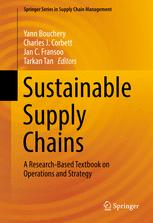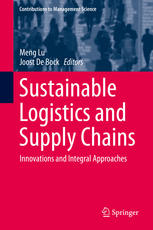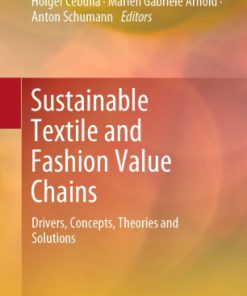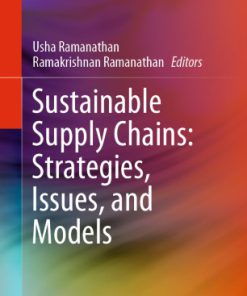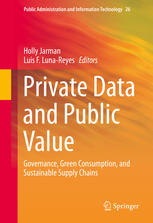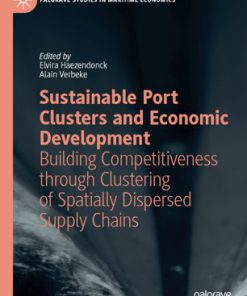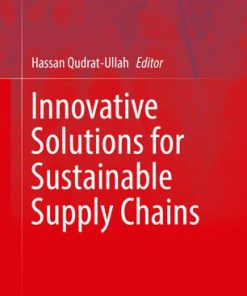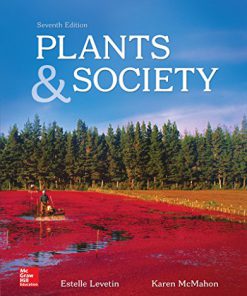Sustainable Development and Tropical Agri chains 1st Edition by Estelle Biénabe, Alain Rival, Denis Loeillet 9402410155 9789402410150
$50.00 Original price was: $50.00.$25.00Current price is: $25.00.
Sustainable Development and Tropical Agri chains 1st Edition by Estelle Biénabe, Alain Rival, Denis Loeillet – Ebook PDF Instant Download/DeliveryISBN: 9402410155, 9789402410150
Full download Sustainable Development and Tropical Agri chains 1st Edition after payment.
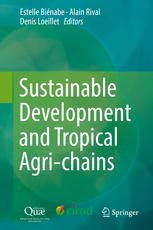
Product details:
ISBN-10 : 9402410155
ISBN-13 : 9789402410150
Author: Estelle Biénabe, Alain Rival, Denis Loeillet
This book links tropical agri-chain dynamics – with which CIRAD and AFD have been involved for decades – to that of sustainable development. Increased environmental and social concerns urge agri-chain actors and development practitioners to design innovations, and public and private actors to invent regulations in connection with agri-chains to improve sustainability. With a view to contributing towards implementing the Sustainable Development Goals (SDGs), this book examines the different roles of agri-chains: as vectors of development, as spaces of innovation, as objects of evaluation, and as arenas of regulation. It builds upon the findings and experiences of CIRAD and its researchers together with their Southern partners, and of AFD and its officers. Linking agricultural production with the other economic sectors, agri- chains are key spaces where local and global challenges to sustainability meet and where local and global actors experiment interlinked or common solutions.
Sustainable Development and Tropical Agri chains 1st Table of contents:
Chapter 1: Introduction
1.1 Filière, Value Chain and Supply Chain: A Diversity of Concepts and Their Origins
1.2 Tropical Agri-Chains and Development
1.2.1 Agricultural Specialization and International Trade in Countries of the South: A Look Back at
1.2.2 Renewal of Filière and Value Chain Approaches and New Public-Private Partnerships
1.3 The Putting of Sustainable Development on the Agenda and Its Political Translations
1.3.1 The Origins of Sustainable Development: The Environment as a Global Issue
1.3.2 International Summits and the Evolution of the Political Agenda of Sustainable Development
1.4 Sustainable Development: Opportunities for Action at All Levels
1.5 Agriculture, Tropical Agri-Chains, and Sustainable Development
1.6 The Goals of This Book and Its Structure
References
Part I: The Agri-Chain as a Vector of Development?
Chapter 2: The Concept of Filière or Value Chain: An Analytical Framework for Development Policies
2.1 The Concept of Filière
2.1.1 A Bridge Between Micro- and Macro-economics: A Disaggregation of the Economic System
2.1.2 The Production of Food Goods: A Privileged Topic of Study and Conceptualization
2.2 The Value Chain: An Instrument for Analyzing Business Strategies in a Context of Globalized Comp
2.2.1 Value and Supply Chain: A Strategic Framework for the Competitiveness of Companies
2.2.2 From National Production Systems to Transnational Production Systems: The Global Value Chains
2.2.3 An Integrated Conceptual Framework of the Value Chain, a Predominant Reference for the Develop
2.3 Conclusion: Incorporating Sustainable Development Issues in the Concepts of Filière and Value C
References
Chapter 3: History of Public Organizations and Associations Specializing in a Single Agricultural Co
3.1 In Pursuit of Imperial Autarky
Box 3.1 French Policy for Regulating the Coffee Trade
3.2 European Integration and Independence: Ruptures and Continuities
3.3 The Great Dismantling
3.4 Conclusion
References
Chapter 4: Evolution of Donor Intervention Modalities on Agri-Chains: The AFD Experience
4.1 A Brief History of French Support to the Structuring of Agri-Chains
4.1.1 From Independence to Structural Adjustment
4.1.2 From Structural Adjustment to the Surge in Prices in 2008
4.1.3 From 2008 to the Present
4.2 Lessons Learnt From the Experience of Some Agri-Chains Supported by AFD
4.2.1 The Rubber Chain in Ghana
4.2.2 The Cotton Chain in Burkina Faso
4.2.3 The Rice Chain in Senegal
4.2.4 The Mangrove Rice Chain in Guinea
4.3 Conclusion: A Progressive Enrichment That Has to Continue
Chapter 5: Alliances Between Agri-Chain Actors for a Sustainable Development of Territories in Vietn
5.1 Methodological Elements
5.2 The Vietnamese Agri-Chains That Are Transforming Territories
5.2.1 The Ba Vì Milk Shed, Between City and the Countryside
5.2.2 Healthy Vegetables in Môc Châu, an Innovative Agri-Chain
5.2.3 Maize Cultivation at Mai Sn, Between Firms and the Peasantry
5.3 Summary of the Observed Transformations
5.3.1 The Emergence of Markets Impels an Agricultural Transition Which Allies the State, Producers,
5.3.2 The Growth of Agri-Chains Leads to an Intensification of Technical Systems and a Higher Econom
5.3.3 From the Derivation of Economic Value from Local Natural Resources by the Market to Their Tegu
Box 5.1 Reconciling the Development of Agri-Chains and the Sustainable Management of Groundwater Res
5.3.4 Agricultural Value Chains Based on the Building Up and Leveraging of Local Expertise and Know-
Box 5.2 Fences, Animals and People: What Sustainable Alternatives for the Development for Bovine Mea
5.3.5 The Growth of Agri-Chains Modifies the Governance of Territorial Development
5.4 Applying a Comparative Approach to the Links Between Agri-Chains and Sustainable Development
5.5 Conclusion: Sustainable Development and Governance of Agri-Chains
References
Chapter 6: Collective Action in Agri-Chains
6.1 A Diversity of Forms of Collective Action
6.2 Understanding Collective Action and Sustainability Through Some Illustrations
6.2.1 Economic and Social Dimension
6.2.1.1 Development of the Milk Cooperative Movement in India
6.2.1.2 Alianza in the Palm Oil Chain in Colombia
6.2.1.3 The Plantain Chain in Cameroon: A Multi-actor Platform
6.2.1.4 Market Information Systems
6.2.1.5 `Fair Trade´ Certification
6.2.2 Environmental and Health Dimensions
Box 6.1 Private Health Surveillance Systems for Local Risk Management
6.3 Conditions Necessary for Collective Action to Improve the Sustainability of Agricultural Value C
6.3.1 Differentiated North/South Trajectories
6.3.2 Importance of Institutional Conditions
6.3.2.1 Dynamics and Capacities of Actor Organizations
6.3.2.2 Dynamics Downstream of the Value Chain
6.3.2.3 Roles and Functions of the State
References
Chapter 7: Agri-Chains (or filières) and Food and Nutrition Security: Two Independent Concepts
7.1 Agricultural Production and Food and Nutrition Security in International Discourse
7.2 The Agri-Chain Centred on an Agricultural Product
7.3 Linkages Between Agricultural Production and Nutrition at the Country Level
7.3.1 Incomes
7.3.2 Availability of a Varied Diet
7.3.3 Prices
7.3.4 Empowerment of Women
7.3.5 Women´s Labour
7.3.6 Health Risks
7.3.7 Exclusion
References
Part II: Agri-Chains as a Framework for Innovation in the Face of Challenges of Sustainable Developm
Chapter 8: Contribution of Research to Innovation Within Agri-Chains
8.1 Innovation Systems and Socio-technical Transitions: Key Elements in Rethinking Support for the D
8.1.1 Innovation System, Capacity Building, and Incentives to Innovate
8.1.2 Innovation Niches, Socio-technical Transitions, and Lock-In Effects
8.2 The Features of The Innovation Process in Agri-Chains in the South
8.2.1 The Value Chain´s Organizational Structure
8.2.2 The Role of Businesses and Entrepreneurial Dynamics
8.2.3 The Importance of Territorial Anchoring
8.2.4 Asymmetries Between Actors of the Agri-Chains and Public Policies
8.3 Contributions of Research
8.3.1 Renewing Knowledge on the Functioning of Agri-Chains with the Actors
8.3.2 Mobilizing and Disseminating Knowledge: The Importance of Expert Appraisals at the Request of
8.3.3 Contributing to Capacity Building
8.3.3.1 Socio-technical Devices
8.3.3.2 Learning Materials and Aids
Box 8.1 Training of Sofitex Agricultural Advisers in Burkina Faso
8.4 Conclusion
References
Chapter 9: Agri-Chains and Partnership Approaches to Research
9.1 The Different Types of Partnerships Formed by CIRAD to Accompany Innovation
9.1.1 Bilateral Partnerships
Box 9.1 A Structuring and Evolving Partnership with a Private Company to Accompany Changes in the Pa
Box 9.2 A Partnership with a Private Group for Plant Breeding in Brazil
Box 9.3 A Partnership with National Institutions to Support Cotton Farmers in Cameroon
9.1.2 Partnership Platforms
Box 9.4 Management Advice for Family Farms: A Methodological and Organizational Innovation
Box 9.5 The Role of a Partnership with Local People in Incorporating Local Knowledge and Practices i
9.2 A Few Key Determinants of the Contribution of Research to Innovation Processes
9.2.1 The Export Banana Chain in the French West Indies: Towards an Agroecological Conversion of Int
9.2.1.1 The Revolution of the Cavendish Variety and the Advent of Intensive Monocultures (1960-1990)
9.2.1.2 The Limitations of Intensive Monocultures and the First Innovations in Cropping Systems (199
9.2.1.3 Awareness of the Environmental Impacts, Reduction in the Use of Pesticides, and Agroecologic
9.2.2 The Cotton Chain in Burkina Faso: Contribution of Research to a Service Innovation for Support
9.2.2.1 Organic Cotton, Genetically Modified Cotton, and Conventional Cotton: Transformations and In
9.2.2.2 A Partnership Between Research Entities and Producer Organizations for the Development of Se
9.3 Conclusion
References
Chapter 10: Design of Cropping Systems and Ecological Intensification
10.1 Limitations of Conventional Practices When Confronted by Current Challenges
10.1.1 The Limitations of Tillage
10.1.2 Limitation of the Use of Fertilizers for Plant Nutrition
10.1.3 Limitations of Pesticide Use in Pest Management
10.1.3.1 Environmental Impacts
10.1.3.2 A Major Technical Limitation: The Emergence of Resistant Individuals
10.1.3.3 Economic Limitations
10.1.3.4 Increasingly Stringent Legislation
10.1.4 A Very Poor Utilization of Water Resources
10.2 New Ecological Intensification Practices
10.2.1 Organic Tillage and Restoration of Soil Biology
10.2.2 Nutrient Cycling and Organo-mineral Management of Crops
10.2.3 Improvement in Water Efficiency
10.2.4 Erosion Control
10.2.5 Biological Pest Regulation
10.2.5.1 Biological Regulation of Pest Populations to Limit the Damage They Cause
10.2.5.1.1 The Introduction of a Functional Plant Biodiversity
10.2.5.1.2 The Use of Macro- and Micro-Organisms for Biological Control
10.2.5.1.3 The Use of Chemical Mediators
10.2.5.1.4 The Use of Natural Substances
10.2.5.1.5 Other Agricultural Practices
10.2.5.2 Reducing Crop Damage Caused by Pests
10.3 Consequences for Design Methods
10.3.1 Taking Local Knowledge into Consideration
10.3.2 Ensuring a More Comprehensive Involvement of Producers During the Entirety of the Design Proc
10.3.3 Involving Other Local Actors Too
10.3.4 Taking into Account Different Scales in the Design of Cropping Systems
10.3.5 Taking into Account the Temporal Aspect of the Agroecological Transition
10.3.6 Favouring the Trajectories of Change Over Ready-to-Use Technological Packages
10.3.7 Implementing a New Concept of Technical Support and Assistance for Actors
10.4 Conclusion
References
Chapter 11: Evolution and Challenges of Varietal Improvement Strategies
11.1 The Ideotypes of Tomorrow Have to Be Defined Today
11.2 Agri-Chains Shape Improvement Strategies
11.2.1 Varietal Improvement of Banana in an Export-Oriented Industrial Supply Chain
11.2.1.1 Strengths and Weaknesses of the Cavendish Group
11.2.1.2 The Banana Chain in the French West Indies (Martinique and Guadeloupe)
11.2.1.3 Improvement of the Banana by Reconstruction
11.2.1.4 A Breeding Platform
11.2.2 Sorghum: From a Basic Subsistence Crop to a Multi-use Plant
11.2.2.1 An Agri-Chain for Multiple Products
11.2.2.2 Uses Dictate the Ideotypes
11.2.2.3 The Example of Biomass Sorghums in France: Variable Ideotypes Based on Different Value Chai
11.2.2.4 Breeding Strategies
11.3 Conclusion
References
Chapter 12: Sustainable Processing Systems: What New Strategies for Tropical Agri-Chains?
12.1 Imparting Quality and Sustainability to Processing Systems in View of Social and Economic Chall
12.1.1 Organizational Forms Must Be Taken into Account While Designing Processes
Box 12.1 Technical Solutions Proposed for the Natural Rubber Chain Affect the Modes of Organization
12.1.2 Contributing to the Sustainability of Small-Scale Processing
Box 12.2 The Mechanization of Fonio Hulling Has Reduced the Severity of Labour Required and Enhanced
12.1.3 Taking the Evolution of Consumer Demands into Account in Traditional Processing Methods
Box 12.3 Fermented Foods, Mainstays of Traditional Food in Africa, Already Meet Several Sustainabili
Box 12.4 Applying Effective Industrial Solutions to Traditional Methods of Cassava Processing: Downs
12.1.4 Ensuring Food Health Safety for Consumers
12.2 Integrating the Environmental Dimension of Processing
12.2.1 Reducing Energy Consumption
Box 12.5 The Processing of Rubber, a Highly Energy-Intensive Sector
Box 12.6 Diagnosis and Prospects of Sustainability of the Dried Mango Chain in Burkina Faso
12.2.2 Issues of Water Consumption and Pollution Control
Box 12.7 Recycling Water and Reducing Emissions: New Environmental Challenges to Primary Processing
12.3 Steps to Incorporate Sustainability Criteria in the Design of Processing Systems
12.3.1 Key Issues for Developing New Multi-criteria Approaches
12.3.2 Modelling the Design of Sustainable Processing Systems
Box 12.8 Modelling Rice Cooking Allows the Incorporation of Elements of Sustainability in the Design
12.4 Conclusion
References
Chapter 13: A Step Towards Food Security
13.1 Several Approaches to Consider
13.2 An Agenda for Research
13.2.1 Theme 1: Increasing the Quantity and Improving the Quality of Food Products Through Upstream
13.2.2 Theme 2: Tighter Integration Between Production, Processing, and Consumption
13.2.3 Theme 3: Limiting or Reducing Post-Harvest Losses and Recycling, Reusing, and Extracting Valu
Part III: Diversity of Uses of Biomass and Inter-Agri-Chain Dynamics
Chapter 14: Agricultural and Forestry Chains in the Countries of the South in the Age of Bioenergy
14.1 The Oil Palm Chain
14.1.1 Production of Biodiesel
14.1.2 Producing Energy from Residual Biomass
14.1.3 Methanization of Effluents
14.2 The Sugarcane Chain
14.2.1 Ethanol Production
14.2.2 Production of Electricity by Cogeneration
14.3 The Cassava Chain
14.4 Woodfuel Chains
14.5 Conclusion
References
Chapter 15: Diversifying Biomass Uses Through New Cropping Systems
15.1 Sugarcane, a Multi-resource Plant
15.1.1 Using the Total Biomass of Sugarcane to Generate Electricity: Towards an Adaptation of Techni
15.1.2 Performance of Planting Material
15.1.3 Adaptations of `High-fibre Sugarcane´ Cropping Systems with Respect to Those for `Traditiona
15.1.4 Farming Practices
15.1.5 Maintenance of Soil Organic Matter
15.2 Impact of Diversification of Sorghum Uses on the Cropping System: Results from the Sweetfuel Pr
15.2.1 The Sugarcane and Sorghum Chains are Complementary for Bioethanol Production
15.3 Conclusion
References
Chapter 16: Inter-supply Chain Recycling of Residues
16.1 Socio-economic Analyses of Recycling Situations
Box 16.1 Chicken manure from eastern Côte d´Ivoire used in cocoa plantations in the country´s wes
16.1.1 From Collection of Municipal Waste to Preparation of Organic Fertilizers for the Horticultura
16.1.2 Integration of Sugarcane Cultivation and Dairy Farming on Réunion Island
16.2 Analysis of Recycling Situations Through the Management of Biomass and Nutrient Flows
16.2.1 An Analysis of Intra-farm Interactions Between Crop Cultivation and Livestock Farming
16.2.2 An Analysis by Simulation of the Use of Livestock Wastes in Peri-Urban Market Gardening: The
16.2.3 Nutrient Balance at the Territorial Level in a Perspective of Exchanges Between Livestock Far
16.2.4 Lessons Learnt from the Situations Studied
16.3 Creating an Industrial Symbiosis Between Supply Chains: An Example of Integrated Management of
16.3.1 The Approach and Its Implementation in Réunion
16.3.2 Proposals for Co-constructed Solutions
16.4 Conclusion
References
Chapter 17: A Counterpoint on Waste
References
Part IV: Agri-Chains and Evaluation of Sustainability
Chapter 18: Why and How to Assess the Contribution of an Agri-Chain to Sustainable Development?
18.1 Why Focus on the Agri-Chains´ Environmental and Social Effects?
Box 18.1 Using Network Analysis to Evaluate the Systemic Sustainability of Agri-Chains
Box 18.2 Assessing the Impacts of Value Chains: A Major Challenge for Multinational Corporations
18.2 Why Life Cycle Methods?
Box 18.3 The Issue of Packaging in the Fruit Sector
18.3 Scope of the Systems Studied
Box 18.4 Recent Changes in the Technique for Treatment of Leaf Fungus in Banana Plantations in Marti
Box 18.5 Beef Production on Réunion
18.4 Conclusion
References
Chapter 19: How to Assess the Environmental Impacts of an Agri-Chain?
19.1 Characterizing the Environmental Impacts of an Agricultural Activity
19.2 Methods and Tools for Environmental Assessment
Box 19.1 The Importance of Field Measurement Devices in the Process of Environmental Assessment
Box 19.2 Assessing the Environmental Impact of Pesticides in the Caribbean and Modifying Practices
Box 19.3 Combining Environmental and Techno-Economic Assessments to Quantify the Efficiency of Agric
19.3 Challenges of Environmental Assessment at Integrated Scales
Box 19.4 Simulation of Changes in Practices at the Farm Level and Consequences on the Impact of a Pr
References
Chapter 20: Instruments to Assess the Social Impacts of Value Chains
20.1 Ex-ante Assessment Methods
20.1.1 Methods of the First Group: Ask Those Who Know
20.1.2 Methods of the Second Group: Identifying Relationships from the Past and Assuming They Will H
20.1.3 Methods of the Third Group: Assessment of Health Using Environmental Assessment Methods
20.1.4 Methods of the Fourth Group: Techno-economic Calculations
20.2 In itinere Assessment Methods (Monitoring)
20.3 Ex-post Assessment
20.3.1 Ex-post Methods When Monitoring Takes Place
20.3.2 Ex-post Methods for Reconstructing the Baseline State
20.4 Conclusion on Social Assessment Methods
References
Chapter 21: Agri-Chains and Evaluation of Sustainability
Part V: Can Agri-Chains Act as an Arena of Regulation of Sustainable Development?
Chapter 22: Agro-industrial Strategies and Voluntary Mechanisms for the Sustainability of Tropical G
22.1 CSR Approach on a Rubber Plantation in Gabon
22.1.1 Sustainability Standards and Olam Rubber´s CSR Strategy
Box 22.1 Environmental and Social Issues Identified as Part of the Environmental and Social Impact A
Box 22.2 Some Aspects of the Implementation of Olam´s CSR Strategy at Its Rubber Plantation in Gabo
22.1.2 The Limits of the Normative Approach to CSR: The Problem of Indirect Effects
22.1.3 The Search for Alternatives
22.2 Deforestation and Commitments of Global Value Chains in the Brazilian Amazon: Limits and Altern
22.2.1 Commitments of Soya Bean and Beef Global Value Chains in the Brazilian Amazon
22.2.1.1 The Soya Bean Moratorium
22.2.1.2 The Commitments of the Beef Global Value Chain
22.2.2 The Limits of Voluntary Commitments: A Partial Compliance with Legal Obligations
22.2.3 The Search for Alternatives: The Case of Paragominas
22.2.4 Lessons Learnt and Possible Avenues for the Future
22.3 Conclusion
References
Chapter 23: The Standardization of Sustainable Development Through the Insertion of Agricultural Glo
23.1 Massive Social and Environmental Effects of the Long-Distance Trade in Biomass
23.1.1 A Historical Perspective of the Long-Distance Trade in Biomass and Its Social and Environment
23.1.2 The Difficulty of Internalizing the Negative Externalities of the Long-Distance Trade in Biom
23.2 The Rise of Private Regulation in Global Value Chains: Sustainability Certification as an Alter
23.2.1 The Proliferation of Transnational Voluntary Mechanisms: Recourse to the Market and Stakehold
23.2.2 New Public-Private Frontiers of Interaction
Box 23.1 Emergence and Functioning of a Roundtable: The Roundtable on Sustainable Palm Oil (RSPO)
23.3 Creating Standards and Qualifying Sustainability: Do the Standards Live Up to Their Promise?
23.3.1 Creating Standards: Inclusion of the Political Perspectices in Question
23.3.2 A Restricted Vision of Sustainability
23.3.3 Qualifying, Measuring, and Making Reparations: The Incommensurability of Damages
23.4 Conclusion
References
Chapter 24: Ecosystem Services, Payments for Environmental Services, and Agri-Chains: What Kind of R
24.1 Ecosystem Services, Environmental Services, and Payments for Environmental Services: Concepts t
24.1.1 Origins of the Concepts
24.1.2 `Commodification´ of Nature?
24.1.3 A Co-evolution of the Concept and Implementation Practices
24.2 Payments for Environmental Services and Environment Labels in the Countries of the South: Some
24.2.1 Payments for Environmental Services in Countries of the South: Experiences from Costa Rica an
24.2.2 Complementarity Between Payments for Environmental Services and Labels
24.3 A Proposed Integrative Approach Between Territorial and Agri-Chain Approaches for Designing PES
24.3.1 Payments for Environmental Services to Households, Oriented Towards Investment and Funded by
24.3.2 Collective Payments for Environmental Services, Mainly Oriented Towards the Conservation and
24.3.3 Public Investments Needed to Clarify Land Ownership and Secure Contracts
24.4 Conclusion
References
Chapter 25: Global Strategies of Firms and the Financialization of Agriculture
25.1 The Financialization of Agriculture: Definitions, Drivers, and Trends
25.1.1 The Drivers of Financialization
25.1.2 History and Trends of World Financialization, in Particular as Concerns Agriculture
25.2 The Process of Financialization in Practice
25.2.1 Investment Funds in South African Agriculture and Agro-Industries: The Establishment of New F
25.2.2 Olam, A Transnational Firm Specialized in South-South Trade
25.3 Reflections on Agriculture, Structuring, and Trends
25.3.1 Far-Reaching Verticalization of Agri-Chains and Concentration Within the Agrifood Sector, and
25.3.2 Corporatization of Agriculture and Takeover of the Traditional Agricultural Sector
25.4 Conclusion
References
Chapter 26: General Conclusion and New Research Perspectives
26.1 Agri-Chains as Spaces of Regulation of Sustainable Development?
26.1.1 Agri-Chains and Development Models: Highly Topical Issues
26.1.2 New Forms of Regulation Associated with Agri-Chains
26.1.3 The Limits of Regulating Sustainable Development Through Agri-Chains
26.2 Agri-Chains and Territories
26.2.1 Agri-Chains in the Territories and the Management of Local Resources
26.2.2 The Territory as a Regulatory Space Complementary to the Agri-Chain
26.3 Agri-Chains as Spaces of Innovation for Sustainable Development
26.3.1 The Bioeconomy and New Ways of Producing Value and Using Resources: New Innovation Perspectiv
26.3.2 Embedded and Interlinked Technical, Political, and Organizational Aspects
26.4 New Challenges for Evaluation
26.5 Challenges of Knowledge Creation: Research Approaches and Agenda
26.5.1 Contextualizing Knowledge In Order to Innovate Sustainably
26.5.2 Positioning of and Approaches to Research
26.5.3 Integration of Knowledge
People also search for Sustainable Development and Tropical Agri chains 1st:
sustainable development and tropical agri-chains
sustainable agriculture in developing countries
sustainable agriculture in the caribbean
sustainable agriculture trends
sustainable agriculture challenges
Tags: Sustainable Development, Tropical Agri chains, Estelle Biénabe, Alain Rival, Denis Loeillet
You may also like…
Business & Economics - Mathematical Economics
Science (General)
Sustainable Logistics and Supply Chains: Innovations and Integral Approaches 1st Edition Meng Lu
Engineering
Business & Economics - Management & Leadership
Sustainable Supply Chains Strategies Issues and Models Usha Ramanathan
Politics & Philosophy
Business & Economics - Mathematical Economics
Business & Economics - Logistics
Innovative Solutions for Sustainable Supply Chains Hassan Qudrat-Ullah
Computers - Web Development
Flexbox in CSS 1st Edition by Estelle Weyl ISBN 1491981431 9781491981436
Mathematics




